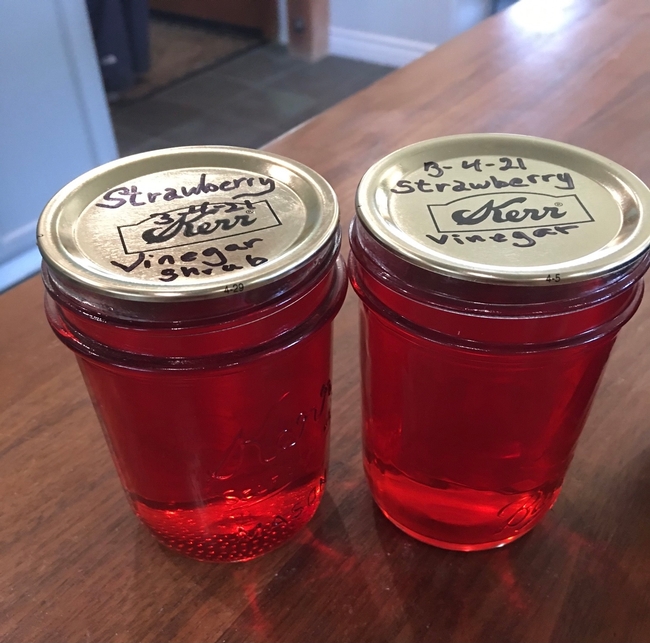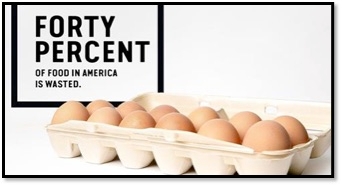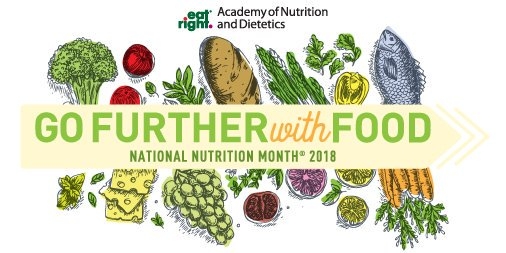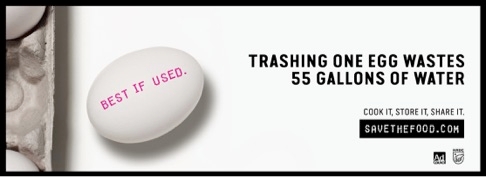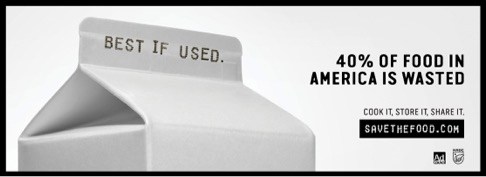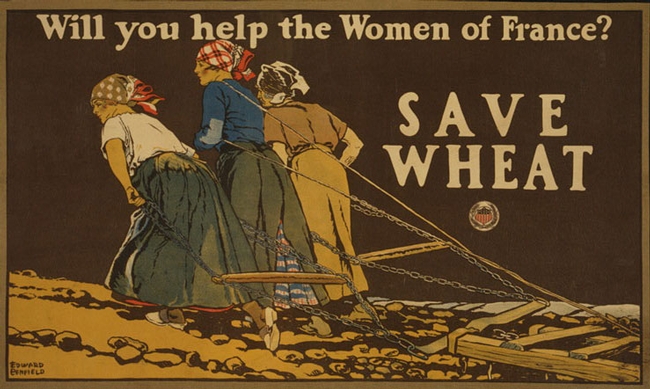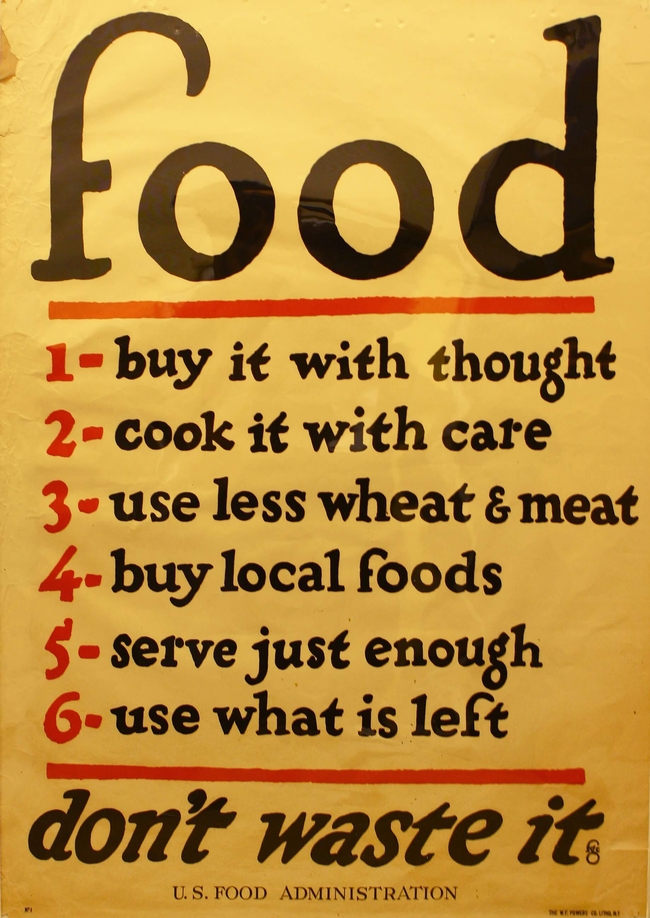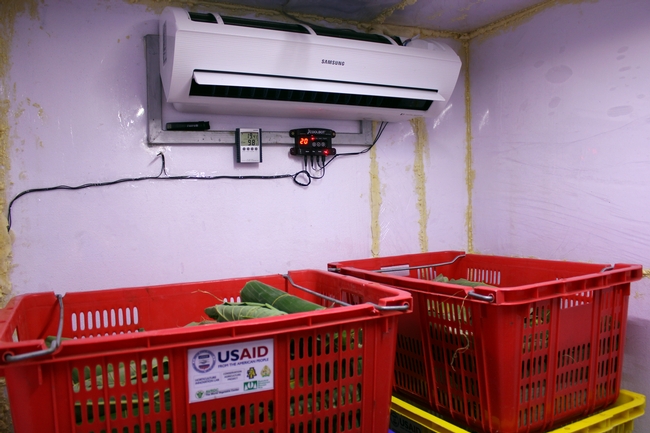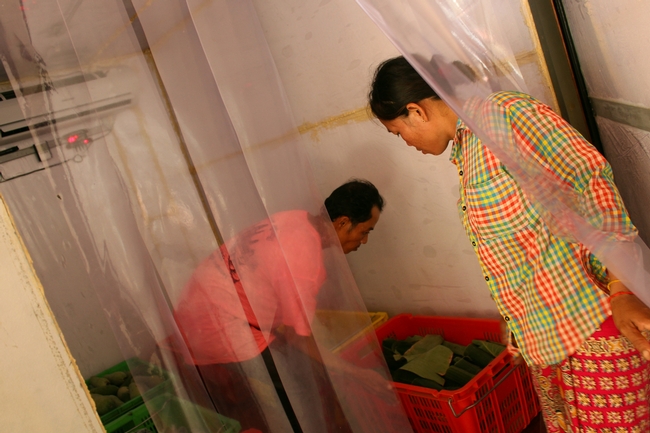Posts Tagged: food waste
UC Master Food Preservers turn food scraps into gifts Dec. 1
Free online class offers recipes for using food scraps, answers questions about food preservation
“Putting food in our bellies instead of landfills is good for the planet,” said Sue Mosbacher, University of California Master Food Preserver Program coordinator. In landfills, decaying food releases methane, a greenhouse gas that contributes to climate change.
“We can reduce food waste and save money by creating new foods from food scraps,” Mosbacher said. “Instead of throwing away a lemon peel after squeezing out the juice, use the lemon zest to make lemon curd or citrus salt. They make wonderful homemade gifts for the holidays.”
UC Cooperative Extension Master Food Preservers, a program of UC Agriculture and Natural Resources, provides ideas for using leftovers and advice for safely preserving food.
On Dec. 1, 6:30 to 7:30 p.m., UCCE Master Food Preserver volunteers of Amador and Calaveras counties will host a free online class to show samples of apple honey, citrus salt, strawberry vinaigrette, sugared walnuts and lemon curd. Recipes will be emailed to participants.
“Many of these gifts are inexpensive to make because you're using food scraps – such as lemon rind or apple peel – and a few other ingredients. You can put the citrus salt in jars you've saved,” Mosbacher said. “It is easy to make and there's no special equipment needed.”
After the “show and tell” session, the UCCE Master Food Preserver volunteers will answer participants' questions about freezing, dehydrating and canning foods and food safety.
Because the class is online, anyone can participate, regardless of their location. Register for the one-hour Zoom workshop at https://mfp.ucanr.edu/Events/?calitem=516566.
The UCCE Master Food Preserver Program extends UC research-based information about home food safety and preservation to the public throughout the year. UCCE Master Food Preserver volunteers are located in 19 counties of California, most recently certifying volunteers in Modoc County, where they are offering pressure canner testing.
UCCE Master Food Preserver volunteers host monthly workshops on the first Wednesday of each month, with hosting duties rotating between Sacramento, El Dorado, Amador and Calaveras counties.
For 2022, the UCCE Master Food Preservers of Sacramento County are planning to offer the following workshops via Zoom:
- Jan. 19 – Citrus for Super Bowl
- Feb. 16 – Dehydration for Soups
- March 16 – Soups & Roots
- April 20 – “Night of Fermenting” Cheese/Yogurt/Sauerkraut
- May 18 – Jams & Jellies
- June 15 – “Ready for BBQ Season” Condiments & Beverages
- July 20 - Red, White & Blue
- Aug. 17 – “Tomato Mania” Salsas, Sauces & Peppers
- Sept. 21 – Sausages & Mustards
- Oct. 19 – “Apples, Pears & Persimmons Oh My”
- Nov. 16 – Sides Dishes for your Holiday Dinner
- Dec. 21 – Quick Gifts
To sign up for any of the workshops above, visit https://sacmfp.ucanr.edu.
To find other upcoming UCCE Master Food Preserver Program events, visit https://mfp.ucanr.edu/Events. To find a program in your county, visit https://mfp.ucanr.edu/Contact/Find_a_Program.
Resources for preserving food and more information about the UCCE Master Food Preserver Program are available at https://mfp.ucanr.edu.
Announcing California's inaugural Food Waste Prevention Week
UC Agriculture and Natural Resources and the Nutrition Policy Institute are pleased to announce March 5 - 9, 2018, as California's inaugural Food Waste Prevention Week. During this week, a range of partners statewide, including the Governor, the Secretary of Agriculture, the State Superintendent of Public Instruction, as well as many other agency leaders in public health, natural resources management, nutrition, and other sectors, are coming together in an unprecedented collaboration to raise awareness about the impacts of food waste in our homes, workplaces and communities.
This collaboration grew out of a meeting held in February 2017 in which the Public Health Alliance of Southern California and the UC ANR Nutrition Policy Institute jointly convened state agencies delivering nutrition education programming to discuss the impacts of food waste and strategize solutions the agencies could advance together. The planning group identified an opportunity to generate and issue shared messaging during National Nutrition Month, a goal that has evolved into California's inaugural Food Waste Prevention Week, a coordinated multi-sector effort to raise awareness about the economic, environmental and social impacts of food waste in California.
Food waste is a significant issue. The United States is losing up to 40% of its food from farm to fork to landfill. That translates to $218 billion lost, including costs of food to consumers and retailers, as well as costs of wasted water, energy, fertilizer, cropland, production, storage and transportation. CalRecycle estimates that Californians throw away almost 12 billion pounds of food each year – 18% of all landfill use in this state. The food in landfills decomposes and releases methane, a powerful greenhouse gas linked to climate change.
In addition, that food loss could have fed people, not landfills, if only it had been used, instead of tossed. In California, nearly 5 million people are food insecure, lacking consistent access to enough food. Roughly 1 in 8 Californians are experiencing hunger, and 1 in 5 of those are children.
Reducing food waste requires action by partners throughout the food system. During Food Waste Prevention Week, stay tuned to the Nutrition Policy Institute Twitter page and the UC ANR Twitter and Facebook pages for food waste prevention resources, tips and ideas.
You can also share food waste prevention ideas by participating in the Food Waste Reduction Hero Photo Challenge. Simply take a few photos that show how food waste happens in your home, workplace or community and what actions/changes you're making to reduce food waste. Share your submissions via social media platforms using the hashtag #SaveTheFoodCA and tag @SaveTheFood on Twitter and/or Instagram, or email your submissions to SaveTheFoodCA@gmail.com. Please include your location.
For more about Food Waste Prevention Week, read Rose Hayden-Smith's UC Food Observer article, see the Nutrition Policy Institute's Research to Action news brief, and watch UC ANR Vice President Glenda Humiston's video.
Even incorporating a few simple food waste prevention actions has great potential to reduce food waste in California. Your efforts to be a Food Waste Reduction Hero this week, and into the future, will make an impact.
Thank you for helping to make a difference during this inaugural California Food Waste Prevention Week!
Food waste is an ethical and environmental issue
Summer brings an abundance of luscious and healthy fruits and vegetables. It's easy to buy more than we can eat, which sometimes results in #foodwaste.
In a guest blog post for the UC Food Observer, UC researcher Wendi Gosliner (part of the team at UC ANR's Nutrition Policy Institute, a cutting-edge unit that's using research to transform public policy) shared this observation:
“Food waste presents a major challenge in the United States. Estimates suggest that up to 40% of the food produced nationally never gets consumed, causing substantial economic and environmental harms. Wasted food utilizes vast quantities of precious land, water and human resources, yet rather than nourishing people, it feeds landfills, producing methane gasses that poison the environment. Much of the food waste (43%) occurs at the household level."
What history can teach us
Here's my take on food waste. It goes back in part to lessons I've learned from studying World War I (WWI), when the American government set food conservation goals (along with goals for local food production via Liberty – later Victory – Gardens). I'm a big proponent of both reducing food waste and producing more food in communities via school, home and community gardens. Big point: the World War I poster included in this post has advice we'd be well served to heed today.
It's an iconic poster from World War 1. Food…don't waste it. The image is regularly shared on Twitter and Facebook.
Period piece or photoshopped image?
The original was produced in 1919 by the United States Food Administration, under the direction of the newly appointed food “czar” – Herbert Hoover.
The poster was reissued during World War II. It's been revised in recent years by individuals and organizations interested in encouraging an ethos incorporating local foods and sustainability.
While I'm the UC Food Observer, I also dabble in the history of wartime poster art. I'm often asked if this is a contemporary mock-up made to look and feel vintage.
It's not a mock-up. It's the real deal, produced 95 years ago, with messages we should embrace today.
The original poster: Yes: ‘buy local foods' is rule 4
The original poster has six rules that we'd be well served to follow today. The fourth rule – buy local foods – is somewhat of a surprise to people today, because the notion of buying local seems somewhat modern. But in WWI, the U.S. government encouraged the local production and consumption of food, in part, to free trains to more effectively ship troops and war matériel.
Tackling food waste through preservation: today's Master Food Preserver Program
Many land grant institutions, including the University of California, host master food preserver programs. These programs teach best practices on food safety and preservation to volunteers. The extensive training program prepares the volunteers to work in their community educating others on the safe practices of food preservation, including pickling, drying, freezing, canning and fruit preserves.
Thinking about gardening? Do we have resources for you!
The University of California sponsors the state's Master Gardener Program, which fields more than 5,000 volunteers in communities across the state. The Master Gardener Program is a national program, housed at the land grant institution in each state, but it's also connected to the USDA. Free gardening resources are available here. Advice to grow by…just ask.
Takeaway message?
Food waste is both an ethical and environmental issue. It should concern us that we waste nearly 40% of the food we produce and purchase in this food-abundant nation.
For an interesting comparative statistic, consider this: our nation produced about 40% of the fruits and vegetables we consumed on the American home front in World War II in school, home, community and workplace gardens. That was the result of the iconic Victory Garden program (which actually got its start in WW1).
Three messages then: participate in the national effort, commit to wasting less food, and if you can, produce some food of your own.
Notes: There are many additional resources about #foodwaste.
Connect: ReFED, a collaboration of nonprofit, government, business and foundation leaders, released a report in 2016 that identifies a number of potential solutions to the food waste challenge.
Read: Dana Gunders of the National Resource Defense Council authored a 2012 report called Wasted that sparked much of this work. Dana also authored a book called Waste Free Kitchen Handbook: A Guide to Eating Well and Saving Money by Wasting Less Food, both of which are great reads.
Read this piece about the relationships between food, farming and the environment (including food waste).
Eating what's on your plate is one of the best ways to tackle climate change. View this episode of Climate Lab, a six-part series produced by the University of California in partnership with Vox.
How one farmer’s invention is reducing postharvest losses around the world
In many developing countries, more than half of all fruits and vegetables are never eaten, but instead are lost, damaged or spoiled after harvest. These “postharvest” losses can mean that farmers need to sell their fresh produce as soon as it is harvested for whatever price they can get, before they lose the crops that represent investments of labor, water, and agricultural inputs. Improving how fruits and vegetables are handled after harvest can significantly prolong freshness — and cooling is key.
“The three most important aspects of postharvest handling are: temperature, temperature, temperature,” said Michael Reid, UC Cooperative Extension postharvest specialist who works with the Horticulture Innovation Lab at UC Davis. “In the developing world in particular, affordable cooling technology is mostly absent.”
Cooling can be expensive — even for American farmers
As a farmer in upstate New York, Ron Khosla knew this problem too well. His vegetable crop was spoiling too quickly, but he could not afford to buy a walk-in cooler for his small farm. So he invented a solution: a small electrical device he called a CoolBot that tricks an air conditioner into getting colder without freezing over, turning a well-insulated room into a cold room at lower costs than refrigeration.
“I was hoping for a cheap, DIY solution that I could maintain. But mostly I just needed to keep my leafy greens and strawberries cold,” Khosla said.
Khosla's CoolBot invention caught the eye of postharvest researchers, including Reid, who saw it in action on farms in California and decided to try using it in developing countries too.
CoolBot goes global with the Horticulture Innovation Lab
In one of his first projects with the Horticulture Innovation Lab (a program led by UC Davis with funding from the U.S. Agency for International Development), Reid partnered with agricultural scientists from Uganda, Honduras and India to test the CoolBot in their climates. The four scientists also tested different local materials as insulation for each of the cold rooms.
Since that first project, the Horticulture Innovation Lab has tested CoolBots for farmer cold storage in Tanzania, Zambia, Uganda, Thailand, Cambodia, Bangladesh, India and Honduras.
Jane Ambuko of the University of Nairobi is another Horticulture Innovation Lab partner who has worked with the CoolBot. She received a grant to pilot this technology with mango farmers for a program called the Kenya Feed the Future Innovation Engine. Her project was featured on an NTV Food Friday news segment about the CoolBot earlier this month.
“I see the CoolBot making a whole lot of difference,” Ambuko said during a TEDxNairobi speech. “But for it to make that desired difference we have to make it cost-effective and affordable for the smallholder farmers.”
Adapting, troubleshooting and scaling up
In many places, the most expensive part of a CoolBot-equipped cold room is the structure for the insulated room, but both Reid and Khosla expect foam building materials to become more widely available and affordable.
In the meantime, Khosla's small business has been growing — selling to not only farmers, but also florists, micro-brewers, and other artisanal food businesses. Now with six employees, the company has sold more than 27,500 CoolBots in 51 countries.
“I'm thrilled and so grateful to be a part of helping lots of people. Working with USAID has gotten us known in other countries, and I'm looking forward to the day when we have enough in-roads in India and Africa where we can work directly with farmers there,” Khosla said. “People didn't believe the CoolBots worked at first. But now we get the most amazing letters from people whose businesses have doubled or quadrupled. Good postharvest care makes such a difference. Once they try it, then they see.”
A previous version of this article appeared in the newsletter for Feed the Future, the U.S. government's global hunger and food security initiative, and also in the Horticulture Innovation Lab blog.
Event - Sustainable solutions and extending California's agricultural expertise to the world: The UC Global Food Initiative and UC Blum Centers will host a Global Food Summit on Sustainable Solutions, May 5-6 at UC Irvine. Elizabeth Mitcham, director of the Horticulture Innovation Lab and UC Cooperative Extension postharvest pomologist at UC Davis, will be speaking about technology transfer for horticulture-related technologies such as the CoolBot, seed drying beads, UC Davis-designed chimney solar dryer, pest-exclusion nets, and other tools the program adapts to the needs of farmers in developing countries. She will also be on a panel with two other UC Davis-based directors of Feed the Future Innovation Labs (UC Davis leads five Feed the Future Innovation Labs with funding from USAID — more than any other university). More info about this event.


